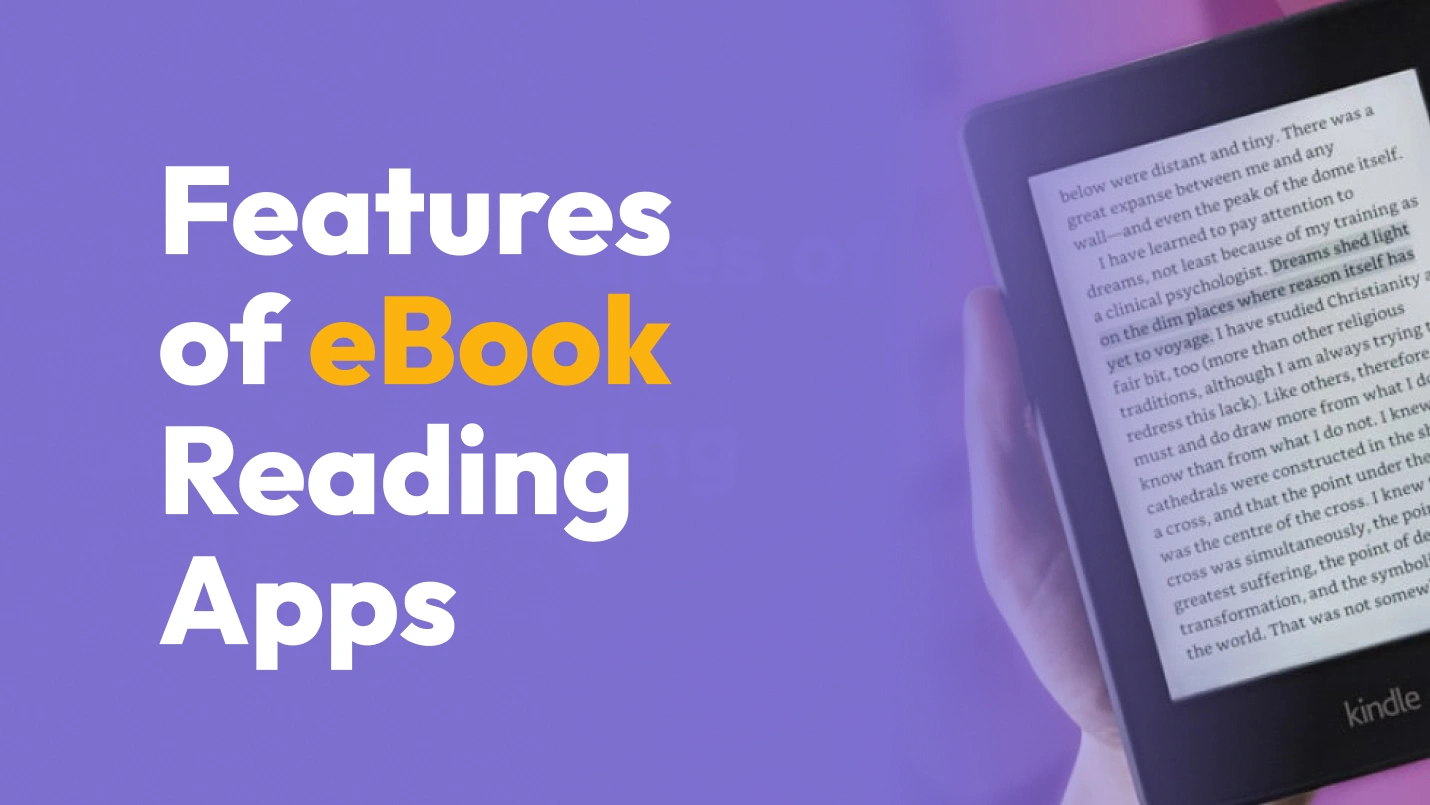With ongoing rapid technology advancements in almost every sphere of life, nothing is left untouched and printed paper is no exception. Paper books are losing ground to eBooks. As the available information explodes, eBooks are currently the go-to medium for how it is organized, viewed, and conveyed. It is no surprise, therefore, that there is an uptick in eBook reading apps.
We recently reviewed the eBook reading apps in the mobile app development ecosystem and listed the 10 best apps for book lovers. For a startup planning to build an eBook reading app, it is important to know what features make a successful eBook reader.
Based on our research and experience in building successful mobile apps, here are a few key features you should keep in mind.
1. An Intuitive List of Available Books
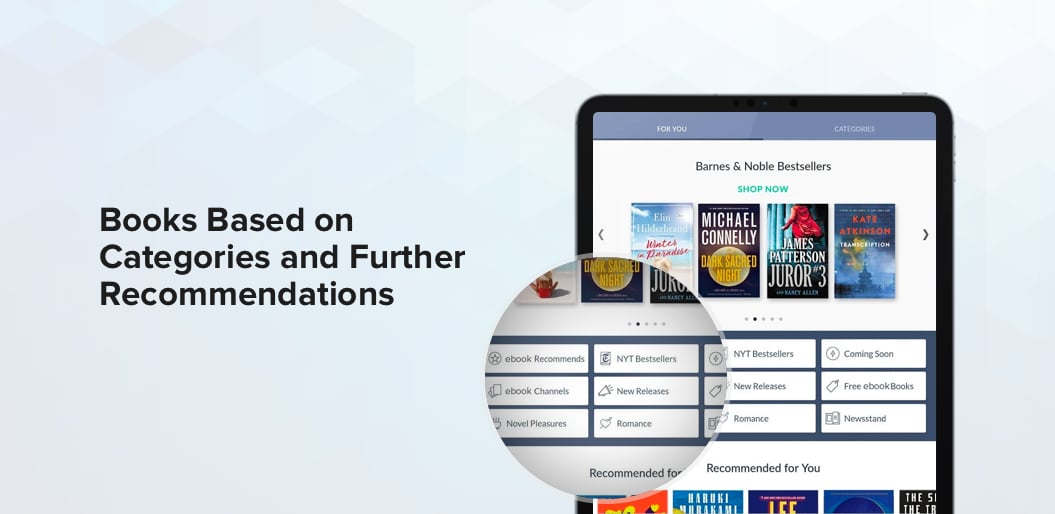
A job well begun… The experience of the eBook reading app starts and is often anchored at the book listing. It is important to have a great way of listing available books, both that are downloaded and are ready to read, as well as those that can be sourced. Besides the usual categorization based on genre such as non-fiction, romance, historical, professional, and so on, the status of various books like in-progress or completed, and even sorting based on length or ratings, or other mechanisms to segregate titles is expected.
Modern apps are also expected to use machine learning & AI to enable recommendations based on user behavior like which books they read and how they interact with the books when they do.
2. Support Different Formats
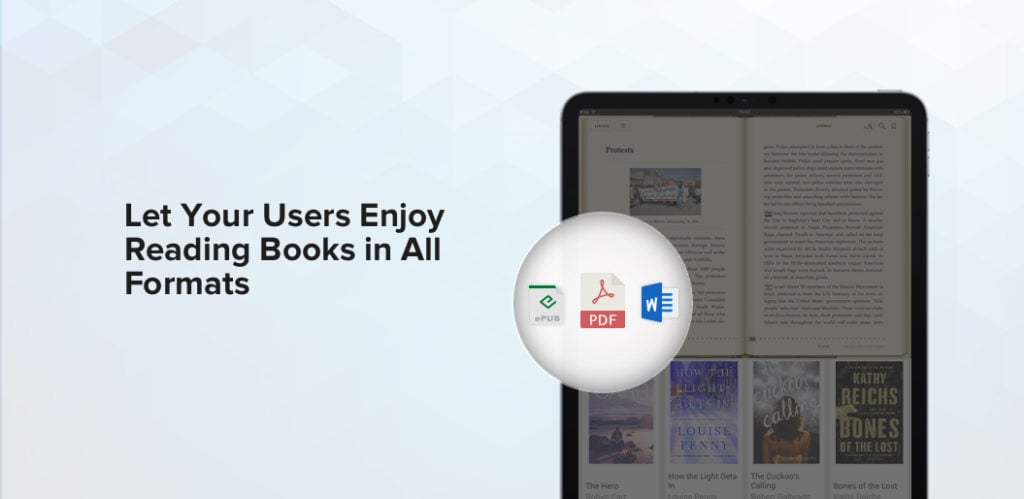
The reading apps support various formats like EPUB, MOBI, PDF, TXT files, Word documents, and even encrypted eBooks like those with Adobe DRM. Various reasons have led to their adoption, some because of the capabilities they provide, some because they are supported and promoted by popular platforms. However, the fact remains that users will have different eBooks spanning multiple formats. Therefore, it makes perfect sense to support as many formats as possible.
An alternative approach to support is to provide an in-built conversion mechanism. Your eBook reader app supports only one or a small number of formats and does it really well. For everything else, as much as possible, offer a seamless conversion mechanism that converts the eBooks provided from their existing format to the preferred, supported format.
3. Store & Sync Your Favorite Books
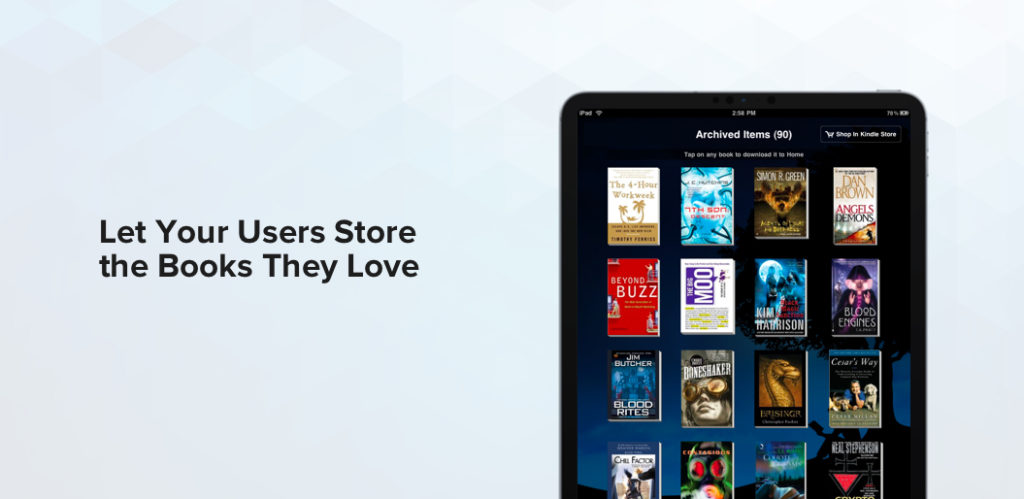
It is almost a given that a modern eBook Reader app will store an eBook locally on the device for quick and offline access. Most of the time, these eBooks would be provided directly by the user. However, once added to your app’s library, saving them to a cloud back-up mechanism shall allow the user to empty their device’s local cache without worrying about the status of their beloved eBooks. They would simply be available on demand when needed.
This further enables a sync mechanism where the eBooks that are available or are being read, are available with reading status info across all devices owned by the user.

We respect your privacy. Your information is safe.
4. Multiple Platform Support
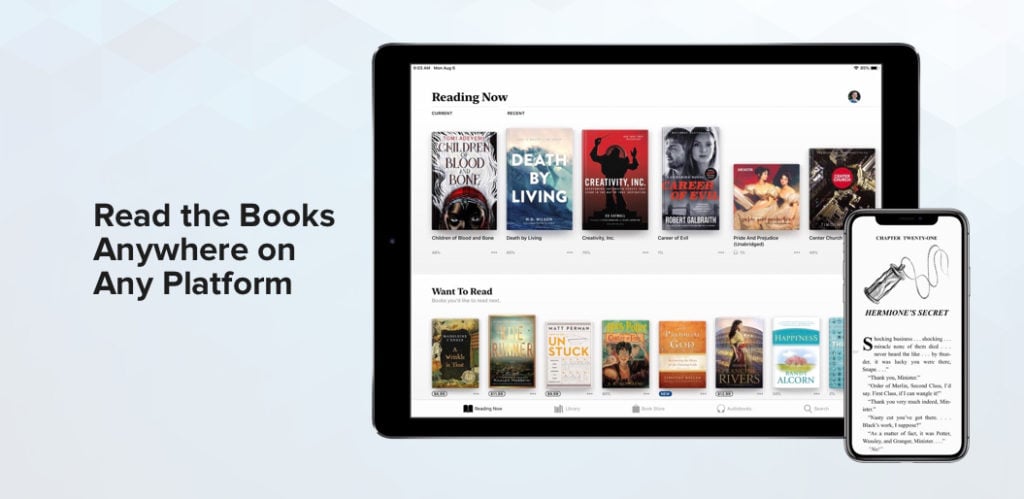
That your eBook reader app syncs across devices and platforms both acknowledge the fact and enables users to continue enjoying their reads in different contexts on different form factors.
As more and more devices become appified, running on different OS, a factor of success is how easy you make it for your users to not only read but continue reading as their preference changes. That means being available on both iOS and Android, on smartphones and tablets, and even large form factor devices like desktop computers.
5. A Reader-Friendly Interface
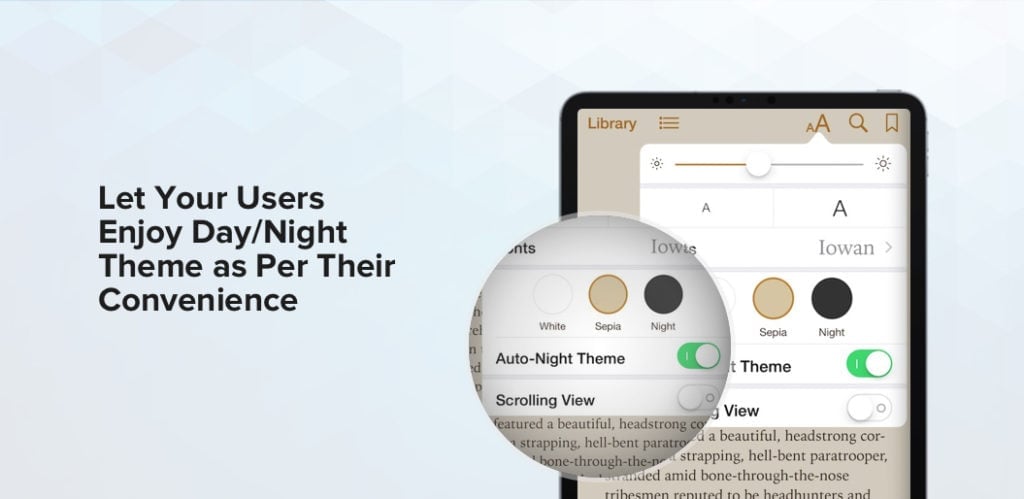
The next piece that makes a successful eBook Reader app is a well-designed, intuitive user experience itself of reading using the app. The interface has to be thought out and designed to enable a great experience. Every little detail helps. Many interactions in common use are based on the real-world experience of reading paper books. At the same time, there have been many innovations based on the capabilities of the platform.
There are well-established conventions like showing a progress bar, allowing different sizes to read the text, adjusting the overall pagination to reflect the updated sizing, and even letting people choose the colors for the text. However, there are some interesting innovations that are also bubbling up. These include taking the time of the day into account to change from blue-tone to red or using ambient sensors to adjust other aspects that affect readability.
6. Reading Tools
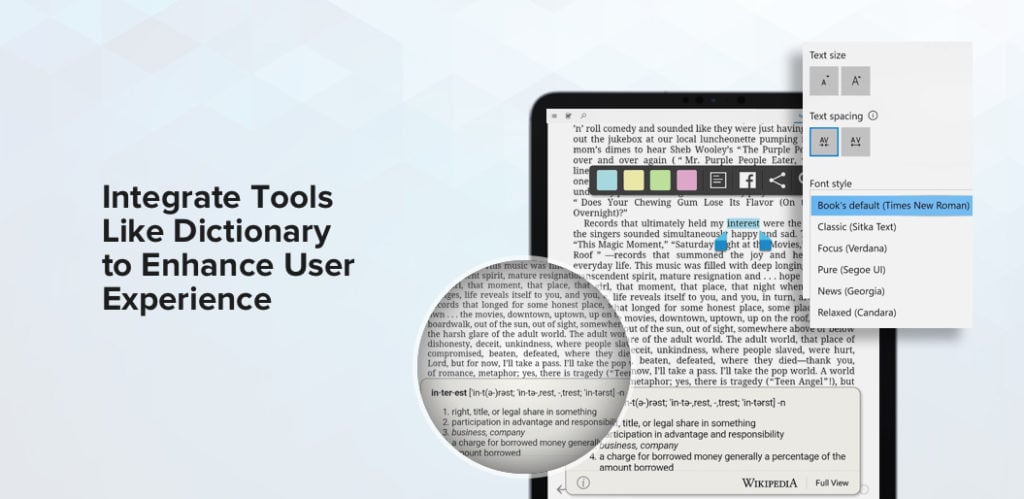
Now that the reader is immersed in a great reading experience, the next task is to accentuate it with tools and services that make it pleasurable. This can be done with standard and even expected tools like bookmarking, an in-built dictionary, ability to attach notes to selected text, and the like. A natural progression of this is to add features like the ability to mark certain sections as favorites and select-and-quote text to external applications.
Some eBook reader apps have slightly more advanced tools like cross-referencing a particular term, or easily finding passages where a certain character has been mentioned. With most platforms enabling text-to-speech, it has become relatively easy for eBook readers to simulate a rudimentary audiobook with text read out in user’s favorite voice.
7. Gamification of Reading
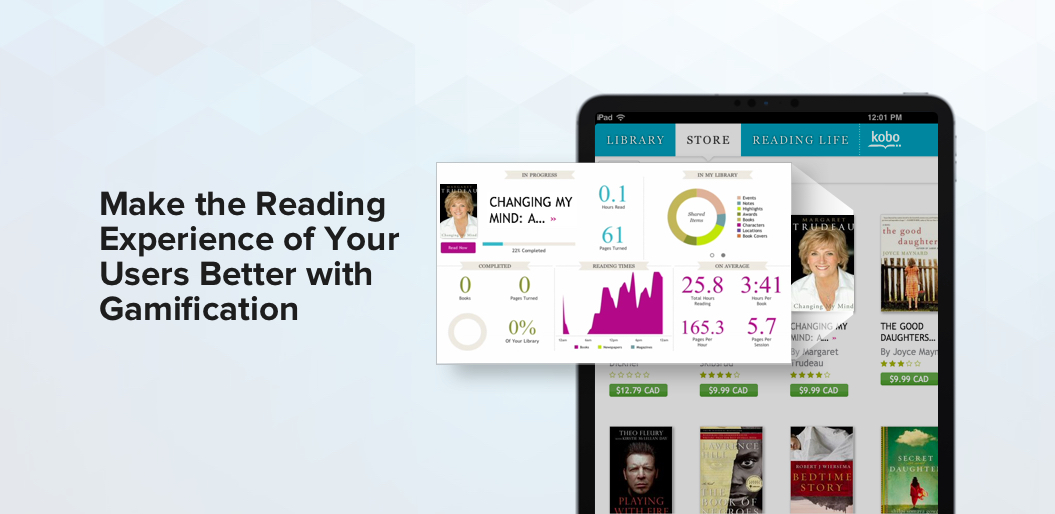
Very few apps these days are devoid of some form or level of gamification. eBook reading apps are not untouched and there are many activities that can be used to provide an involved, gamified experience to the users.
Features like badges or stickers, levels, streaks, and more, often supported by rewards are standard features. There are specific activities specific to reading eBooks like the speed of reading that are often used to enable these.
This experience can be made more elaborate by adding social aspects to gamification.
8. Social Integration
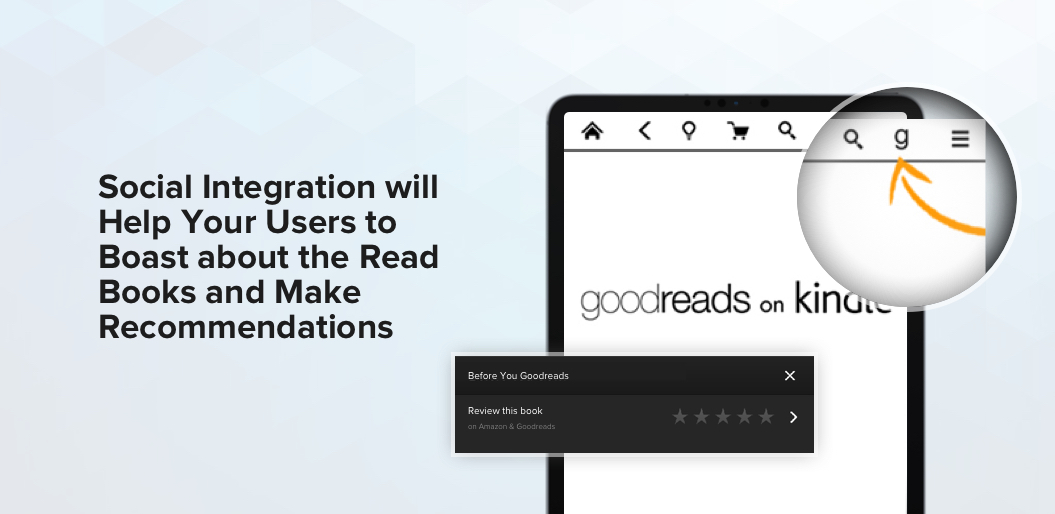
Eventually, all apps have to recognize the ubiquity of social interactions in everything that we do as humans. Traditionally where books were often lent as recommended reading, or people got together to read a book together and discuss, modern apps with social integration have made it easier to do it with people all over the globe.
Services like Goodreads have enabled communities of readers to come together, and social networks allow for standard features like social announcements to more modern things like reading challenges. People are able to not only recommend books, but also discuss them among like-minded groups.
Modern eBook reading apps should respect this, and also thrive to allow users an overwhelmed social reading experience.
Conclusion
eBook readers are gaining popularity as the written content is exploding and more people discover the joy of reading. With quickening digital accesses, and plunging cost of devices, there will always a demand for the perfect eBook reader app. These essential features are must-haves to enable success in this environment.
So? What are you waiting for? If you have something in mind, talk to our experts for bringing innovative mobile app development solutions and ideas into reality.


